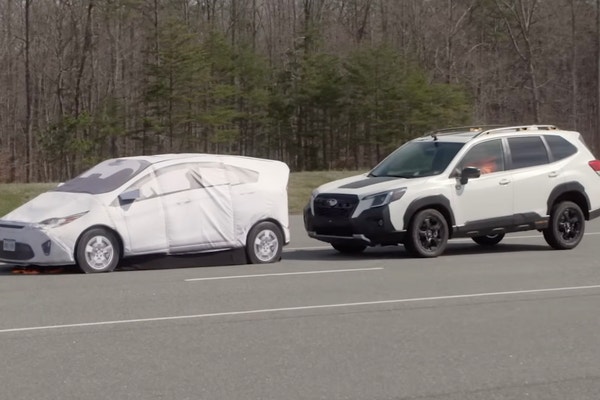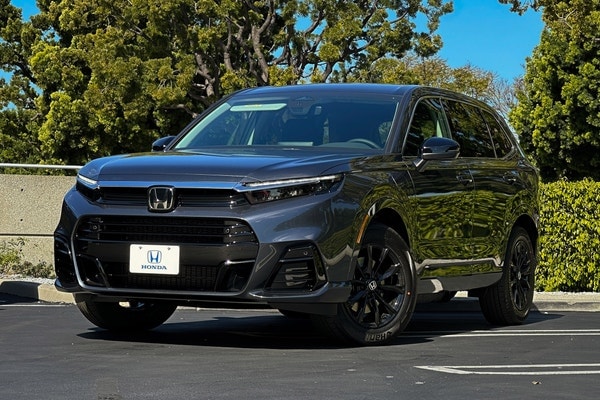Used 2011 Honda Civic LX-S Coupe Review
Consumer reviews
Read what other owners think about the 2011 Honda Civic LX-S Coupe.
Most helpful consumer reviews
1 year
altimase35, Clearwater, FL, 09/25/2011
2011 Honda Civic LX-S 4dr Sedan (1.8L 4cyl 5A)
This is my wifes 3rd honda.
2 accords before this.
Bought the car for my wife.
she loves the car.
easy to read speedometer.
simple car which does not overwhelm her with gadgets.
She wanted a small car and felt the accord was to big.
Honda has made this car as cheap as possible.
steering wheel material starting to come off.
not sure why?
Florida is hot, but one year?
Doors seem to flex … when shuting.
hollow sounding.
car does not feel stable at high speed.
car tends to move around especially when being passed by vehicles.
soft suspension?
No compaints about the engine or transmission.
Gas milage is good.
stereo is basic, speakers are ok.
A piece of junk
J. Aiello, Palm Bay, FL, 12/21/2015
2011 Honda Civic LX-S 4dr Sedan (1.8L 4cyl 5A)
This is my second Honda and I regretted buying both. Our troubles started immediately with the A/C. The dealer replaced the compressor TWICE (Honda replacement parts are rebuilt!!) and then replaced almost every other part of the A/C system, including the 3rd compressor. I took it to another repair shop and they found a broken expansion valve, but the system failed again a short time … later. I also had issues with the rear window lifts. After the dealer tried to fix the problem numerous times I finally called Honda HQ and they replaced both rear window registers. The paint on the top was beginning to wear off!! Gas mileage dropped from 32 MPG to less than 28 for no reason. I finally traded it in with just 11,000 miles for a new 2015 KIA Soul which we love.
You have disappointed me Honda
John, Rochester, NY, 06/05/2016
2011 Honda Civic LX-S 4dr Sedan (1.8L 4cyl 5A)
Let me start by saying, I love Honda.....or should I say loved Honda. My first car was a '93 Del Sol. What a blast that car was to drive. Taking your targa top off and blasting the radio, while listen to the cold air intake give your 4 banger some grumble. The love I developed for that car as I took her to 210,000 miles made me a believer in Honda. As much as that car made me love Honda … is as much as this Civic has done too make me hate Honda.
Now that is a bold statement so let me explain. Honda uses the cheapest and worst paint known to man kind. After two years on the road, the front of my purchased brand new with 7 miles on it Honda looked like it had been driven in multiple sand storms in Iraq. The paint on this car chips off with the slightest of ease. If you think I am crazy read reviews on 03 to 07 Honda vehicles.... apparently Honda still hasn't figured out how to fix their paint problem....or maybe they just don't care. Further more, I have a heat shield near the manifold the vibrates. I am familiar with this happening on older vehicles where shields rust off, (hell, I drove a del sol up to 210,000. Everything rusted off that car) but a 3 year old (at the time it started) vehicle should not experience this problem.
Now to the ECM. A animal chewed the wires on my O2 sensor causing my check engine light to come on. (I own that this is not Honda's fault, but what comes after is) Easy fix it seemed, I bought a new O2 sensor at Autozone and changed it out, reset my codes, took it for a test drive, and low and behold the light came back on. Next I check all the fuses, painstakingly checking each circuit with a meter (thinking it blew a fuse). Everything checked out fine, so I now ordered the Bishko repair manual for the vehicle, so I could get a detailed view at the schematics for the O2 sensor circuit. Turns out there is no fuse for the O2 sensor, so when the animal chewed the wires insulation away, the open wires now touched. When I went to start the vehicle, unknown that the wires were chewed, it shorted the circuit frying the ECM! What should have been a simple O2 repair and fuse switch out, turned into a $150 used ECM install and a $100 reprogramming fee by the dealership. If I had the dealership do this it would have cost upwards of $600.
Now happy me, my car is working again, except that 4 months later I hear a clanking noise coming from the serpentine belt. So I assume this is the drive belt auto tensioner. I purchase a new drive belt and tensioner. Work for a few hours removing stuck on bolts in areas I can barely get a finger into. Cuss a lot, replace it all, get it back together, start the vehicle and the clanking noise is still there. Well now I have brought you up to the present day. My next move is to check the A/C compressor, which I have to imagine is the problem now that I have ruled out the auto tensioner. Why a vehicle with 59,000 miles on it requires a new A/C compressor is beyond me. For those of you who don't know, an after market auto tensioner and belt can be had for about $75, And an A/C compressor for about $300. Take this to a mechanic and your looking at $800 + repair bill. Take it to the dealership and you will have a $1000 + bill.
I bought this Honda so I wouldn't have to work on my car anymore expecting to be repair free till at least 120,000 miles. Now at 60,000 miles I feel like this car is failing apart.
This vehicle has no impressive interior features, very basic. The steel wheels are too wide for the cars weight. This gives you improved cornering in the summer, but driving in the snow, this car slips all over, even with studded snow tires.
I regret purchasing this car, as it has given me the same reliability of an ex-girlfriends Suzuki, which I was forever under the hood of......well maybe not quite that bad... but it has finally made me say, "maybe next time I try Toyota".
No regrets - still happy after six years
Fred, Irvine, CA, 05/03/2017
2011 Honda Civic LX-S 4dr Sedan (1.8L 4cyl 5A)
I bought this car new back in 2011 and have a little over 90,000 miles on it now. Other than the passenger air bag recall (which was free), I've had exactly ZERO non-scheduled visits to the dealer, nothing but regularly scheduled services. This car has done multiple 3,000 mile road trips in summer across the California and Arizona deserts and winter, including blizzards (which I … wouldn't advise no matter what you're driving). This car has always been dependable. On the long trips, I've gotten as much as 39 mpg and never less than 35 mpg. Doing short hop, day-to-day driving, I've never gotten less than 25 mpg and usually get in the 27 mpg range. The interior has held up including the driver seat (no holes worn into the bolster where I get in and out like in a previous car). I'm a about 6'2", and I don't need to have the driver seat all the way back to be comfortable. The seats have been very comfortable on those long drives, much better than those in my wife's new Subaru Outback. My paint (white) has had no issues whatsoever with unusual chipping. No fading of the primary paint at all. The only paint that's faded at all is the paint on the black trim strips where the front and rear doors meet, but from what I can tell, that's very common with cars having that same black trim. My only complaints have been with the Honda dealer where I formerly had my car serviced. In winter, they filled the washer fluid reservoir with plain water which promptly froze when I drove up in the mountains. On another visit, they charged me $90 to rotate my tires, but they didn't actually rotate my tires (they were marked). I didn't notice this at first, but a week or two later when I did, I called the dealer, and they said they check to see if the tires need rotation but only rotate them if they need it, so they charged me $90 to look at my tires. That was my last visit to that dealer for service.
Edmunds Summary Review of the 2011 Honda Civic LX-S Coupe
Pros & Cons
- Pro:Good fuel economy
- Pro:wide variety of engines and transmissions
- Pro:comfortable and well-built interior
- Pro:available coupe body style.
- Con:Some common convenience and safety features are only available on fancier models
- Con:elevated road noise
- Con:hybrid's high price and slow acceleration.
Full Edmunds Review: 2011 Honda Civic Coupe
Edmunds Insurance Estimator
The Edmunds TCO® estimated monthly insurance payment for a 2011 Honda Civic in Minnesota is:
not availableLegal



